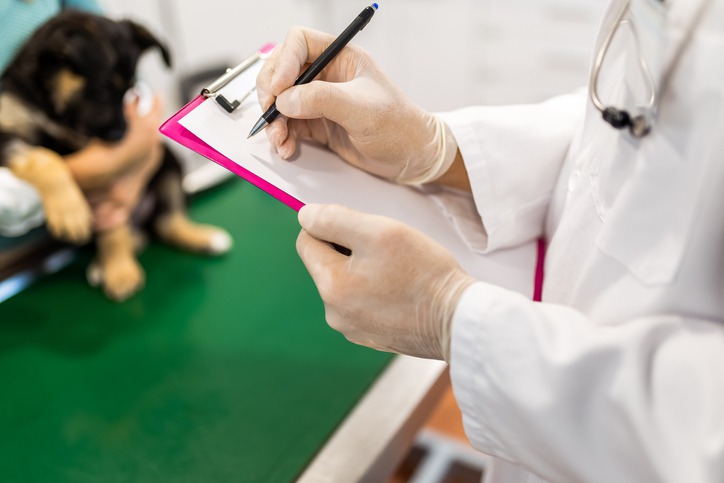Low-level laser therapy (LLLT) is an innovative approach to enhancing pet health through noninvasive means. This therapy has gained considerable interest among pet owners seeking advanced treatments to alleviate their pets’ discomfort and improve their quality of life. In this guide, we will explore the basics of LLLT, how it works, its benefits, safety measures, and what to expect during a session.
What is Low-Level Laser Therapy?
Low-level laser therapy, also known as cold laser therapy, involves the use of low-intensity lasers to stimulate cellular function, promoting healing and pain relief. Unlike high-intensity laser treatments used in surgeries, LLLT is noninvasive and painless, making it suitable for both cats and dogs.
How Does It Work?
LLLT uses specific wavelengths of light to penetrate tissue and stimulate cellular activity. Here’s how it works:
-
The laser emits photons, which are absorbed by the cells in the targeted tissue.
-
This absorption stimulates the mitochondria, the cell’s powerhouse, leading to increased production of ATP (adenosine triphosphate).
-
Increased ATP production enhances cellular function, speeding up the healing process.
-
The therapy also helps reduce inflammation, increase blood circulation, and accelerate tissue repair.
Benefits for Cats and Dogs
Pets can gain numerous advantages from LLLT. For instance, cold laser treatment for dogs and cats has shown remarkable effectiveness in managing chronic pain and arthritis, enabling pets to regain mobility and enjoy a higher quality of life. Other conditions where LLLT can be beneficial include:
-
Reducing inflammation caused by injuries or infections.
-
Accelerating the healing of skin wounds and post-surgical incisions.
-
Alleviating pain associated with degenerative joint diseases.
-
Improving recovery times for sprains and strains.
Is It Safe?
Safety is a critical concern for pet owners, and LLLT is designed to be a highly safe procedure. The risk of side effects is minimal, and the therapy is noninvasive, avoiding the complications associated with surgeries and medications. When administered by trained professionals, LLLT is safe and effective. Common concerns and their mitigations include:
-
There is minimal risk of burns or tissue damage due to low-intensity lasers.
-
It is non-toxic and does not require pet sedation.
-
Usually, there is no discomfort or pain during the sessions, keeping pets calm and stress-free.
What to Expect During a Session
Understanding what happens during an LLLT session can ease any apprehension pet owners might have. Here’s a step-by-step walkthrough of a typical session:
-
Initial Consultation: A thorough assessment of your pet’s condition by the veterinarian.
-
Preparation: Pets should be groomed to allow easy light penetration. No specific fasting or medication adjustments are usually required.
-
Therapy Session:
-
The pet is comfortably positioned.
-
The laser device is applied to the targeted area, often for several minutes.
-
Owners can often stay with their pets to keep them relaxed.
-
Post-Therapy Care: No special aftercare is necessary, but veterinarians may provide advice on activities and monitoring.
Who Can Administer It?
It’s crucial to seek LLLT from trained professionals to ensure its efficacy and safety. Typically, certified veterinarians and technicians administer the therapy. Before starting any advanced treatments like LLLT, ensuring pets are up-to-date with their vaccinations is paramount. Clinics that offer comprehensive dog vaccination services are generally well-equipped to provide holistic care, combining preventive and therapeutic approaches for optimal pet health.
Frequently Asked Questions
1. What kind of conditions can LLLT treat?
LLLT can treat a variety of conditions, including chronic pain, arthritis, inflammations, skin wounds, and post-surgical recovery. It’s particularly effective in managing conditions like hip dysplasia and tendonitis.
2. How long are the therapy sessions?
Therapy sessions typically last between 5 to 20 minutes, depending on the size of the area being treated and the severity of the condition. Frequency and duration are tailored to the pet’s specific needs.
3. Does pet insurance cover it?
Coverage for LLLT varies by insurance provider. It’s advisable to check with your pet’s insurance company to understand the specifics of your policy and whether it includes coverage for advanced treatments like LLLT.
How to Find the Right Veterinary Clinic
Choosing the right veterinary clinic is essential for ensuring your pet receives high-quality care. Here are some tips for selecting a reputable clinic:
-
Look for clinics with certified and experienced staff who specialize in advanced treatments. Consulting an experienced animal surgeon in Ruckersville is advisable, especially for specialized treatments like LLLT.
-
Check online reviews and ask for recommendations from other pet owners.
-
Consider the range of services offered. A clinic providing comprehensive care, from diagnostics to treatment and aftercare, ensures all aspects of your pet’s health are addressed.
-
Evaluate the clinic’s facilities and equipment. Modern, well-maintained equipment is crucial for effective treatment.
Final Thoughts
Low-level laser therapy represents a safe and effective way to enhance your pet’s well-being. By understanding how the therapy works and its benefits and ensuring qualified professionals administer it, pet owners can make informed decisions about incorporating LLLT into their pet’s healthcare routine. Consult your veterinarian to explore whether LLLT is a suitable option for your pet and take proactive steps towards ensuring a happier, healthier life for your furry friend.

